Kelly Quilter, CFRE
Vice President
Reach out to donors and other key stakeholders—now.
Uncertainty is unsettling, and silence can signal instability. Donors want to hear from you—especially in times of change. Start with a prioritized list of your closest supporters and assign personal outreach efforts. Who can be contacted in the next two weeks? What communication will others receive?
Prioritize personal touchpoints: phone calls, video chats, and one-on-one conversations. Today’s digital fatigue means that authentic, direct contact stands out. If you must use email or social media, personalize your tone—write as if you’re speaking to one person, not an audience.
Hopefully, your institution has created talking points or an FAQ. But this situation is fluid, and everything is changing rapidly. Try to avoid speculation or rumor. Even if you don’t have all the answers, communicate what you do know. Be transparent. Share your commitment to mission and values—and your plan to weather the moment.
Reaffirm your mission. Lead with purpose.
While legislation, economic uncertainty, endowment taxation, and political tensions dominate the headlines, donors and stakeholders need to hear what endures: your institution’s commitment to education, research, and community impact.
Frame your messages around your university’s mission. While it might be tempting to jump right into the unprecedented circumstances, it’s critical to reaffirm your commitment to your students and school when communicating with stakeholders. Only then should you turn to our social and financial disruptions—but do so without sowing fear or sensationalizing.
Here’s a very practical example: if you are emailing a general update, don’t lead with hot topic keywords in the subject line. Instead, herald “Building Resilience and Moving Forward” or something similarly resolute.
Educate stakeholders about the impact of endowment taxes.
A new reality for many private institutions is the tax imposed on endowments—diverting funds that would otherwise support scholarships, faculty research, and academic innovation. Many donors may be unaware of this change or its implications.
Consider simple, factual messaging:
- “This tax reduces the funds available for student aid and academic programs.”
- “Your continued support is more critical than ever to ensure access, opportunity, and excellence.”
Help donors understand how their generosity helps fill the gap and protect long-term institutional strength.
Clarify changes to DEI programs and language.
New laws and regulations have led many institutions—especially public and state-funded colleges and universities—to dismantle or significantly alter diversity, equity, and inclusion (DEI) programs. These shifts may be far-reaching and affect student services, campus programming, faculty and staff roles, scholarship eligibility criteria, naming conventions, and the language used in communications.
Many donors, alumni, and other stakeholders may be unaware of the scope or implications of these changes. Transparency is critical to maintaining trust.
Help stakeholders understand that these changes are not a retreat from institutional values—but rather a legal necessity. And where possible, emphasize your continued commitment to access, belonging, and academic excellence within the new legal framework.
Be a resource for your community.
Amid uncertainty, colleges and universities can serve as steady hands. Consider how your faculty, staff, and students might contribute to the broader public good:
- Can your economics or political science faculty demystify today’s legislative landscape?
- Could your alumni network offer mentoring or internship support to students facing a tough job market?
- Can you showcase ways students and staff are engaging in community resilience efforts?
Tap into your community’s desire to help.
Economic uncertainty often stirs generosity—especially toward institutions that have shaped lives. Make it easy for your supporters to offer their time, networks, and resources:
- Invite alumni to help seniors navigate job searches or graduate school decisions.
- Encourage mentors to connect with first-generation or under-resourced students.
- Highlight emergency funds or scholarship initiatives that donors can support today.
Rethink engagement.
Whether facing reduced travel budgets, smaller reunions, or postponed events, disruption doesn’t have to mean disconnection. Make up for lost opportunities with meaningful alternatives:
- Offer virtual career networking events for students and alumni.
- Provide video messages from university leaders or faculty to maintain personal connection.
- Consider exclusive donor briefings or Q&A sessions to maintain transparency and trust.
Fundraising strategies for uncertain times.
Campaigns and fundraising strategies must adapt. Here’s how:
- Planning a campaign? Proceed with internal steps—refining your case for support, gathering input, aligning leadership. For external engagement, consider delaying major announcements until donors have more confidence in the economy.
- Managing existing pledges? Anticipate changes. Some donors may defer payments. Others may redirect funds toward immediate priorities like operating needs or student aid. Others may want to take advantage of timely tax code opportunities. Open the door to those conversations.
- Soliciting new gifts? Prepare for more flexible giving. Donors may hesitate to commit multi-year pledges but may offer one-time gifts with openness to future support. They may also be more inclined to agree to an immediate gift with a letter of intent documenting likely future support.
Rally around causes that resonate today.
Reassess your appeals to align with what donors care about most in this moment: student support, access, affordability, faculty excellence, and institutional resilience. Avoid making solicitations for projects that feel optional or long term—like facilities—unless they’re reframed within today’s urgent context.
Remember: Charitable giving is resilient.
History has shown that—even in moments of deep uncertainty—people continue to give. From the Great Recession to the COVID-19 pandemic, charitable giving has proven remarkably durable across decades of economic, social, and political disruption. Read more about how giving endures through crises here.
That said, responses vary widely across higher education. For some institutions, pressing pause may be a valid and strategic choice. For others, stopping everything can be a costly misstep. Decisions should be grounded in your institution’s unique context:
• Your mission and the urgency of your work.
• Your financial health, day-to-day capacity and expenses, and long-term sustainability.
• The strength and needs of your donor and alumni community.
Some institutions will thrive in times like these—pivoting to meet the moment—while others will need extra support and careful planning to sustain operations and momentum.
If you’re unsure which path is right for your institution, let’s talk. Benefactor Group’s team of experts can help you navigate disruption, make informed decisions, and chart the right course forward.





